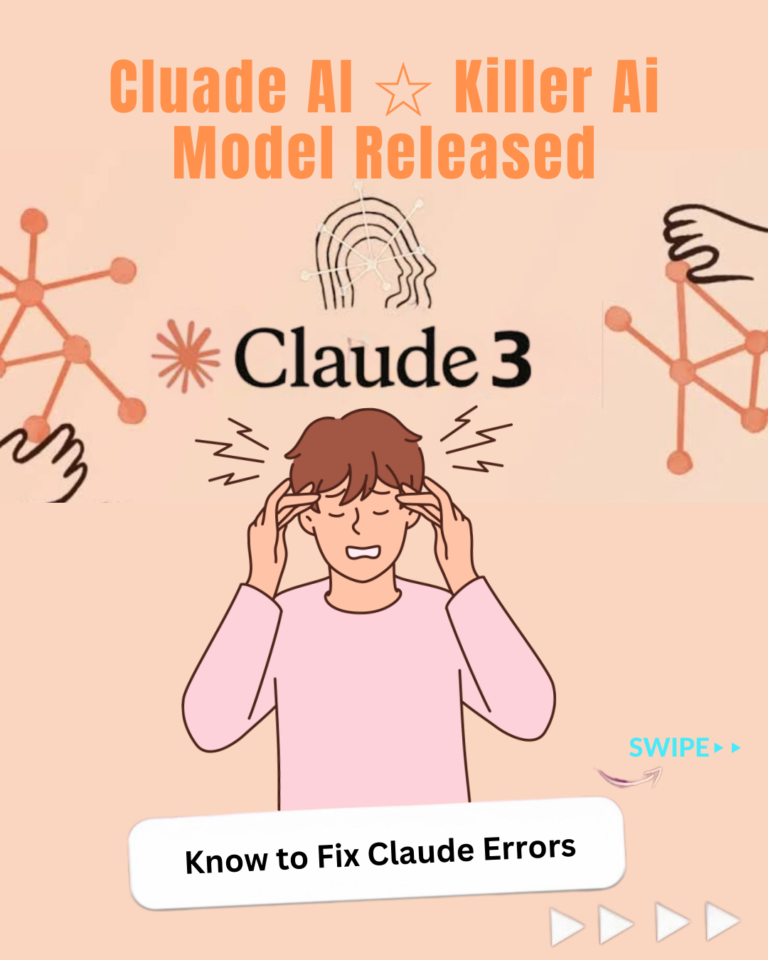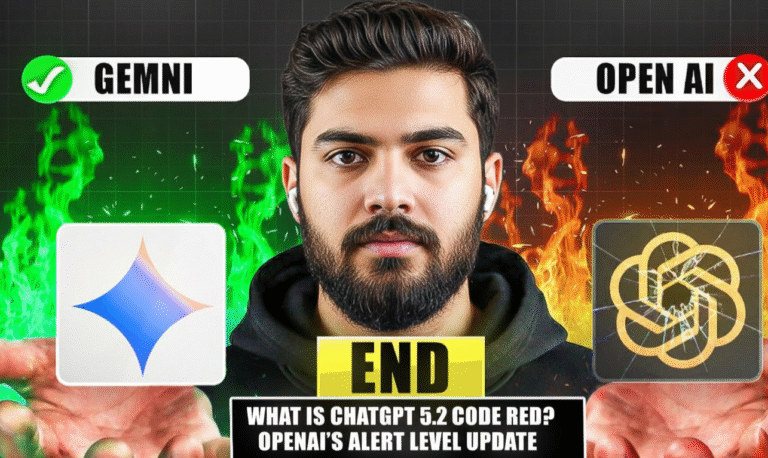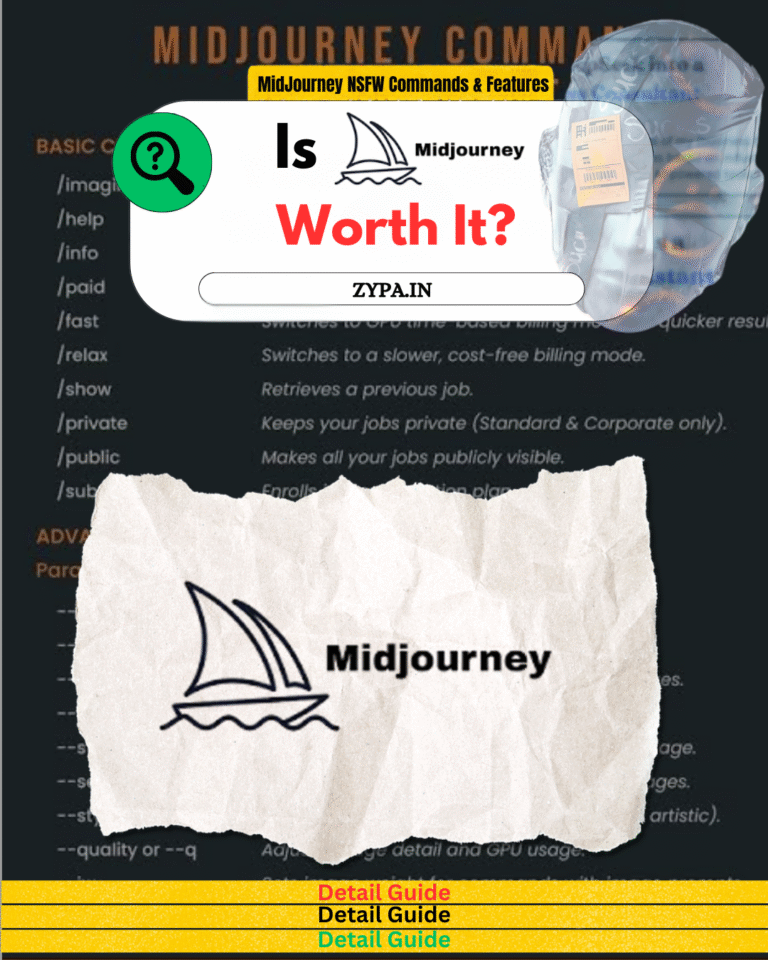Are you finding it difficult to keep up with the rapid advancement of AI? After mastering one tool, a more advanced and intelligent one appears. You understand the urge to use Claude Sonnet 4.5 as agentic ai to code more quickly, produce better content, and automate intricate workflows if you work as a developer, creator, or digital strategist. You can’t let yourself fall behind.
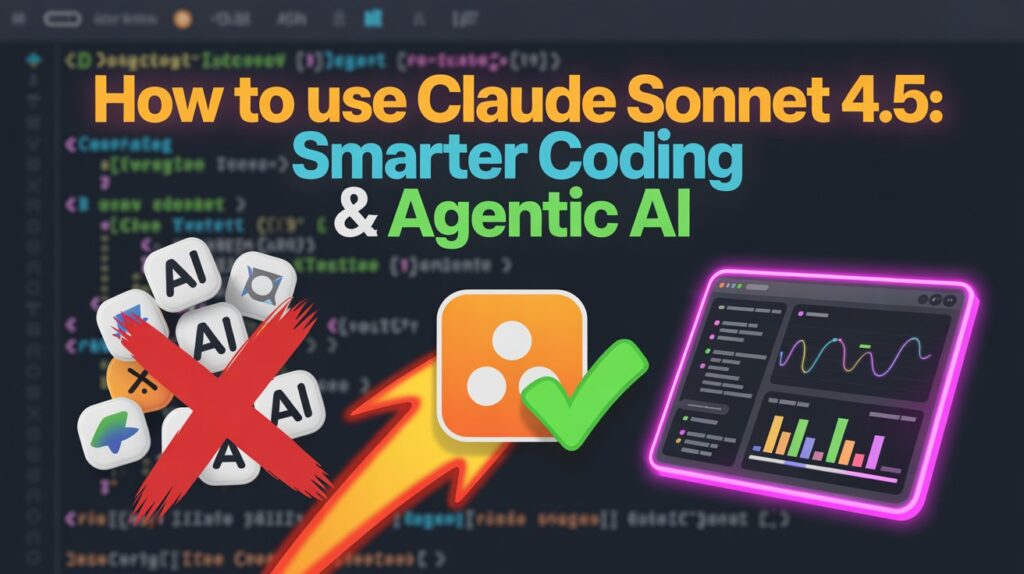
Anthropic’s most recent innovation, Claude Sonnet 4.5, was created especially for intricate Claude Sonnet 4.5 coding and self-directed “agentic” jobs. Claude Sonnet 4.5 is a specialist in contrast to generic models like ChatGPT or Gemini, which are excellent all-arounders. Because of its precision and endurance engineering, it can complete intricate, multi-step tasks for more than 30 hours without losing context. This is a committed AI partner for serious builders, not just another chatbot.
This tutorial will transform you from an inquisitive novice into an expert user. We’ll cut through the jargon and get right to real-world, useful applications that you can use right now.
Claude Sonnet 4.5 → What is it and why is it revolutionary?
Consider an AI that actively works with you on a project from beginning to end, rather than only responding to your inquiries. That is Claude Sonnet 4.5‘s main promise.
Claude Sonnet 4.5, which was released by Anthropic, is more than a minor update. It signifies a dramatic change toward AI that is more independent and dependable, particularly in Claude Sonnet 4.5 coding and intricate problem-solving.
What distinguishes it from the others, then?
- 🎯 Unmatched Endurance: Its capacity to manage prolonged duties is its most notable feature. Claude Sonnet 4.5 is ideal for large-scale code creation or data analysis because it is made to stay focused for more than 30 hours, whereas other models could become distracted throughout a complex workflow.
- 📌 Coding-specific: Anthropic has called it the “best coding model in the world.” It does exceptionally well on tests like SWE-bench Verified, which evaluates practical software engineering abilities. It produces code that is cleaner and ready for production.
- 🚀 Agentic Capabilities: Use Claude Sonnet 4.5 as agentic ai to organize and carry out a sequence of actions to accomplish a goal. It can be compared to a project manager who can write code.
- 🎯 Improved Safety and Reliability: It is based on Anthropic’s AI Safety Level 3 framework, which lowers unwanted behaviors and increases its credibility as a business-critical application partner.
Getting answers more quickly isn’t the only goal here. It involves assigning complete workflows to a competent AI partner.
Conclusion: AI is more than just a Q&A tool. Claude Sonnet 4.5 gives you a collaborator who can manage whole projects. What is the first challenging assignment you would assign to a 30-hour-per-day AI?
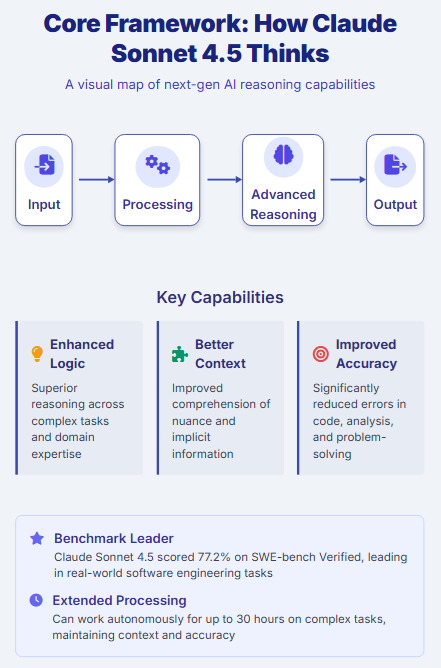
Smarter, Faster Coding → From Full-Stack Development to Debugging
Let’s do something filthy. The capacity of Claude Sonnet 4.5 coding to comprehend context and generate excellent, usable code is its real strength. It’s similar to working beside an experienced coder who never gets bored.
Mini-Tutorial: Python Code Debugging
This is a typical situation: you have a Python script that is generating an error, but you are unable to identify the cause.
1. Give the error and the code
Give Claude Sonnet 4.5 the entire error message together with the problematic code. Being particular is essential; you must provide the AI with clear, valuable input in the same way that you would engage your audience with clear, valuable content.
Prompt Template:
I am attempting to retrieve data from an API using a Python script, however I am encountering a KeyError. Can you assist me in debugging it?My code is as follows:
[This is a Snip of Your Python Code]The complete error message is as follows:
[This Is Your Complete Error Message]Please supply the updated code and describe the problem.2. Examine Claude’s Reaction
Claude Sonnet 4.5 will explain why the code was broken in addition to fixing it. This is an important opportunity to learn.
Claude’s Anticipated Reaction:
Obviously! The key 'data' that you are attempting to access is not present in the API response dictionary at that level, which is why you are seeing the KeyError. A 'results' list appears to contain the data.The problem is that you are requesting a response.json()['data'] when response is the correct path.['results'][0] json().The updated code is as follows:# Python Code FixesAdditionally, I've included a check to make sure the 'results' list isn't empty before attempting to access it, which will strengthen your code.3. Put into Practice and Confirm
Make use of the updated code. The explanation transforms a frustrating bug into a useful lesson that helps you avoid making the same mistake again.
Pro Tip: Always ask Claude Sonnet 4.5 to “explain its steps” or “add comments to the code.” This facilitates code maintenance and offers deeper debugging insights, both of which are in line with Google Creators’ value-adding philosophy.
Are you prepared to take on a more difficult task?
Also Read: Fix Claude AI Internal Server Error in Click – Expert’s Fix
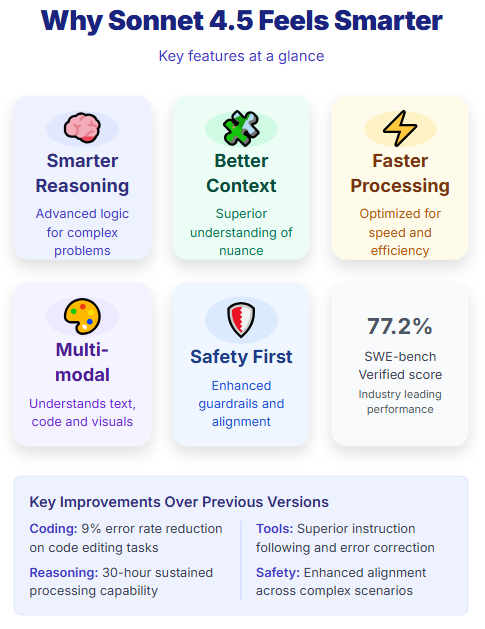
The Revolution of Agentic AI → Your Initial Multi-Step Automation
Claude Sonnet 4.5 really excels in this situation. Use Claude Sonnet 4.5 as agentic ai may sound complicated, but in reality, it’s only an AI that can independently generate and carry out a to-do list.
Let’s say you wish to create a basic weather app. You offer Claude Sonnet 4.5 a broad objective rather than requesting the code in its component parts.
How to Implement an Agentic AI in Claude Sonnet 4.5
1.Establish the Overarching Objective
Start with a prompt that is explicit and outcome-oriented.
✅ Prompt template
I want to use Claude Sonnet 4.5 as agentic ai to create a basic web application with Flask and Python.The objective is to:
- Make a single page with a form for users to enter the name of their city.
- After submitting the form, retrieve the city’s current temperature using the OpenWeatherMap API.
- Present the outcome on the page, such as “The temperature in London is 15°C.”
- Divide the project into distinct files for the HTML template (index.html) and the application logic (app.py).
Kindly organize the procedures and create the code for each file that is required.
Watch Claude Make Plans and Carry Them Out
Claude Sonnet 4.5 will start by organizing the work into a sensible strategy. This is how it could appear:
Plan:
- Establish the project’s framework: Make a folder with the files app.py and index.html in the templates subdirectory.
- Create the app.py Flask backend:
- Bring in the required libraries (Requests, Flask).
- Configure both GET (display form) and POST (process form) requests to be handled by the main route (/).
- Retrieve the city from the form in the POST handler.
- Call OpenWeatherMap via the API.
- To obtain the temperature, process the JSON response.
- Pass the weather data to the template as you render it.
- Make the frontend HTML file (templates/index.html):
- Create a basic HTML form with a submit button and a text field for the city.
- To conditionally display the weather result, use Jinja2 templating.
Obtain the Complete Code
Claude Sonnet 4.5 will produce the whole code for every file in accordance with its plan. You receive a whole, production-ready application rather than fragmented pieces.
Hours of back and forth are avoided with this method. Building a community with your audience to encourage interaction is similar to developing a relationship with your “AI assistant,” which results in a more effective workflow.
What if you requested Claude to not only design the application but also create a GitHub Actions workflow for deployment and a Dockerfile for containerization? That’s now completely feasible thanks to its agentic capabilities.
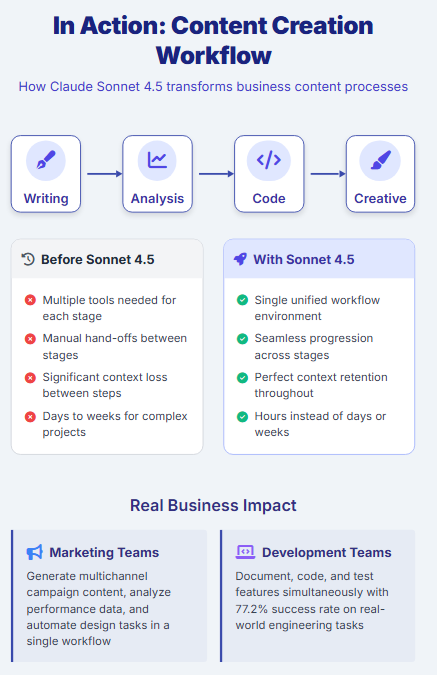
How to use Claude Sonnet 4.5 extended thinking mode
Have you ever had the impression that an AI only provided a cursory solution to a challenging issue? The opposite is How to use Claude Sonnet 4.5 extended thinking mode.
When this option is activated, Claude Sonnet 4.5 displays its functionality. As it analyzes an issue, weighs potential solutions, and continuously improves its solution, you can observe its internal monologue. It’s ideal for jobs where precision and nuance are more crucial than speed.
How Extended Thinking Mode Is Activated:
The idea is universal, even though the precise implementation may differ depending on the platform (Claude API, Amazon Bedrock, etc.). You can activate it in the API by using particular headers or options.
When to apply it:
- 🎯 Complex Architectural Choices: The task at hand involves intricate architectural choices, such as “Design a scalable microservices architecture for an e-commerce platform.”
- 📌 Deep Research Synthesis: “Analyze these three research papers on quantum computing and summarize the key conflicting theories.”
- 🚀 Multi-step Coding Projects: In this mode, the previously mentioned weather app example would be even more reliable.
Asking a chef to explain their complete process of developing a new dish is analogous to How to use Claude Sonnet 4.5 extended thinking mode. You receive the recipe and the underlying theory in addition to the finished dish.
Conclusion: How to use Claude Sonnet 4.5 extended thinking mode for your hardest challenges. As valuable as the actual response is the understanding of the AI’s thought process.
Also Read: How to Use Perplexity Labs Like a Pro: Create Killer Content
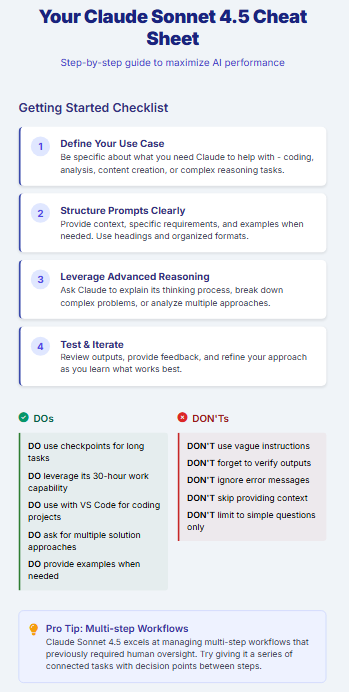
Claude Sonnet 4.5 VS Gemini Pro VS GPT-4/GPT-5
How does Claude Sonnet 4.5 compare to its competitors? Although each model has advantages, Claude Sonnet 4.5 has established a strong market niche.
| Feature | Claude Sonnet 4.5 | Gemini Pro | GPT-4/GPT-5 |
|---|---|---|---|
| Ideal for | High-Endurance Tasks, Agentic Workflows, and Claude Sonnet 4.5 coding | Broad Knowledge, General Problem-Solving, and Creative Writing | Data analysis, multimodal comprehension, and Google Ecosystem integration |
| Agentic Sturdiness | Sector Over thirty hours of leadership | Excellent, but there should be less focus on excessive duration | Robust, particularly when using Google APIs |
| Coding | Outstanding performance (highest SWE-Bench scores) | Extremely powerful, all-purpose | Powerful and proficient in web technologies |
| Price | Mid-range price ($3/M input, $15/M tokens) | Varies and may be more costly at the upscale level | Frequently more economical for certain jobs |
| A Special Quality | Interleaved reasoning and How to use Claude Sonnet 4.5 extended thinking mode | The most extensive general knowledge base | Workspace, Cloud, and Google Search native integration |
Convert to Sheets
This table demonstrates that selecting the appropriate AI for the task is now more important than identifying the “best” one. A clever developer knows the niche of their tool, just as a good creator knows the niche of their audience. Claude Sonnet 4.5 is a top option for creating reliable, intricate apps with an AI co-pilot.
See our content calendar creation guide for additional information on content strategy.
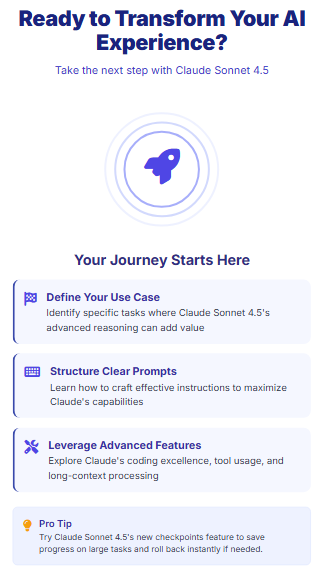
Secret Treasures → Expert Advice to Increase Productivity by 10x
Here are some lesser-known tips to maximize Claude Sonnet 4.5‘s potential beyond its most notable features:
- 🎯 The prompt for “Assume a Persona”: “Act as a senior principal engineer at Google” or “You are a world-class cybersecurity expert” are good ways to begin your prompt. This makes it easier for the model to take on a particular tone and more precisely access domain-specific knowledge.
- 📌 Use the claude CLI: This command-line interface is a strong means of incorporating Claude Sonnet 4.5 straight into your local development process for developers who are accustomed to the terminal.
- 🚀 Interleaved Thinking: Claude Sonnet 4.5 can reason in between tool calls because of an innovative API feature called interleaved thinking. This makes its use Claude Sonnet 4.5 as agentic ai capabilities much more dynamic and responsive since it can conduct a search, evaluate the findings, and then choose the next course of action.
- 🎯 Quick Chaining for Big Projects: Divide a big project into smaller ones. Request that Claude Sonnet 4.5 draft a thorough project structure and file manifest in response to your initial prompt. Then, using the original design as a guide, ask it to produce the code for each file individually in the ensuing prompts.
Pro Tip: When encouraging AI, authenticity is just as important as it is when creating content. Give precise, authentic background from your project. The output will be more customized and beneficial if your input is more sincere and thorough.
Also Read: Gemini 2.5 Flash Image Nano Banana: Truth Behind the Hype
Claude Sonnet Cheat Sheet: Essential Prompts, Coding Tricks & AI Workflows
I’ve been digging around the web to find the most practical resources on Claude Sonnet and agentic coding—and these two guides stood out. While I didn’t create them myself, I’ve handpicked and brought them together here because they cut through the noise and give you exactly what you need: quick prompts, coding tricks, and proven workflows to get the most out of Claude. Think of this post as a shortcut to the good stuff—no fluff, just the essentials.
Create a Real Project → A Comprehensive Guide Walkthrough
Talk is cheap. Let’s construct something tangible. We have developed a sample project that builds a markdown-to-HTML blog generator in Python using Claude Sonnet 4.5.
This project illustrates:
- 📌 Agentic Planning: Use Claude Sonnet 4.5 as agentic ai to design the complete program in the first prompt.
- 🎯 Superior Code Production: It generated Python code that was clear and commented.
- 🚀 File handling: The logic to read markdown files and write HTML files was created by the AI.
The entire project, including the precise prompts used and the finished product, is available on our GitHub repository.
✅ Project Repository Example: Click here to see a repository testing Claude Sonnet 4.5 for code
This provides you with a physical model that you can replicate, execute, and modify. We think that in order to establish authority and confidence with our audience, we need demonstrate rather than merely tell.
Conclusion → What Comes Next?
More than just a potent language model, Claude Sonnet 4.5 offers a preview of how humans and AI will collaborate in the future. For developers, academics, and digital creators, its capacity to reliably and precisely tackle intricate, time-consuming operations opens up new possibilities.
Learning to use Claude Sonnet 4.5 as agentic ai will help you do more than simply write code more quickly. Building, automating, and innovating at a scale that was previously unthinkable is what you’re studying.
This is not the conclusion of the adventure. You’ll find new methods to push the limits of what’s feasible as you incorporate these strategies. Visit the Zypa.in blog to learn more about content production and digital growth.
Together with your new AI partner, what will you create? 🚀 Leave a comment below with your thoughts!



